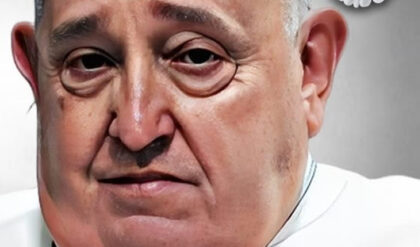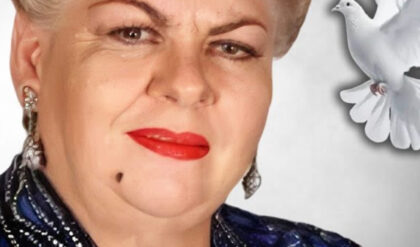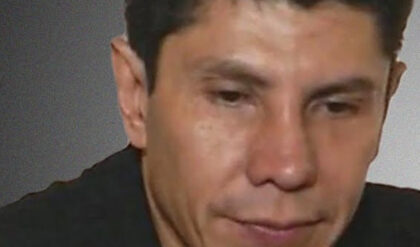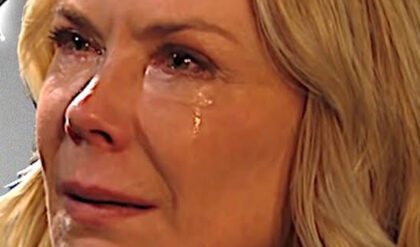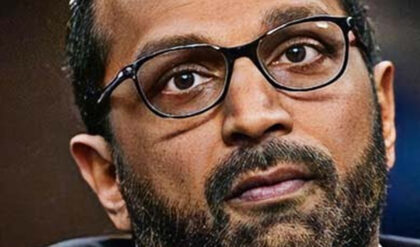Ringo Starr, now 84, has had an incredible career that spans from humble beginnings in Liverpool, England, to becoming one of the most recognizable drummers in rock history. Born Richard Starkey, he first rose to fame as the drummer for The Beatles, a band whose influence changed the music landscape forever. However, despite the success, the group disbanded in 1970, leading to ongoing speculation about the reasons behind their breakup. For years, fans and the media blamed Yoko Ono, John Lennon’s wife, as a contributing factor. Yet, Ringo Starr, now reflecting on his long career, offers a more nuanced view on the subject.
Ringo Starr was born in Liverpool’s Dingle neighborhood in 1940, a working-class area marked by small, crowded homes and frequent hardships. Ringo’s parents, Richard Starkey Sr. and Elsie Gleave, were both confectioners who shared a love for swing music and dancing. However, his family life was fraught with challenges. His parents separated when he was young, and Ringo rarely saw his father afterward, leaving his mother to support the family alone.

Ringo faced significant health issues during his childhood. At age six, he had to undergo an appendectomy, a routine surgery that led to a severe infection. The resulting complications caused him to slip into a coma for days, and he remained hospitalized for a year. As he recovered, he missed out on school, and his education suffered.
Later, he contracted tuberculosis and spent two years in a sanatorium. Despite these setbacks, Ringo found solace in music, developing a fascination with percussion instruments during his long hospital stays. The hospital staff encouraged patients to join a band, which allowed Ringo to play makeshift drums and discover his passion for rhythm.
As Ringo’s health improved, he returned to school but struggled to catch up academically, often skipping classes to play outdoors. Yet, with the encouragement of a neighbor who tutored him, he managed to make some progress. His love for drumming continued to grow, and he began experimenting with rhythm on household items. Eventually, his stepfather, Harry Graves, gifted him a basic drum kit for Christmas, allowing Ringo to hone his skills further. This support fueled his aspirations, and he started to play in local bands, developing his stage presence and musical style.
Ringo’s first musical venture came in the form of the Eddie Clayton Band, a skiffle group that performed around Liverpool. Skiffle was a popular music style in the UK during the 1950s, characterized by its blend of jazz, blues, and folk. As rock and roll took off, however, skiffle’s popularity waned, and Ringo soon joined a new band, Rory Storm and the Hurricanes.
The Hurricanes became a prominent act in Liverpool, performing at holiday camps and clubs, including Butlin’s, where they enjoyed a successful residency. During this period, Ringo adopted the stage name “Ringo Starr,” inspired by his penchant for wearing rings and a desire to create a distinctive persona.
Ringo first met the members of The Beatles during a stint in Hamburg, Germany, where his band was headlining at the Kaiserkeller club while The Beatles performed as the opening act. Ringo occasionally played with The Beatles, developing a rapport with John Lennon, Paul McCartney, and George Harrison.
This friendship set the stage for a significant turning point in his life. In 1962, The Beatles’ manager, Brian Epstein, invited Ringo to join the band, replacing their drummer, Pete Best. Although some fans protested the decision, Ringo quickly became an integral part of The Beatles’ sound and identity.
The Beatles’ success was meteoric, with each member bringing a unique element to the group. Ringo’s steady drumming and relatable personality endeared him to fans and helped anchor the band’s dynamic. Yet, as they rose to international fame, tensions within the group increased.
Creative differences, heavy touring schedules, and the pressures of fame took a toll. Yoko Ono’s close involvement with John Lennon, especially during recording sessions, sparked rumors that she was responsible for the discord. Many fans and commentators blamed her for interfering with the band’s cohesion.
However, Ringo Starr has repeatedly stated that the reasons for The Beatles’ breakup were more complex. According to Ringo, the band’s separation was due to a combination of factors, including individual ambitions, personal differences, and the growing pressures each member felt as they evolved as artists.
Over the years, he has defended Yoko Ono, pointing out that each member was moving in different directions creatively. Ringo also shared that, as they matured, each Beatle felt the desire to pursue their unique musical paths.
After The Beatles disbanded, Ringo embarked on a successful solo career, releasing several albums and hit singles. He continued to explore his love for music and performed with various artists over the years. Now at 84, Ringo reflects on the extraordinary journey that took him from a sickly child in Liverpool to one of the most beloved figures in music history. His openness about the band’s breakup offers a balanced view, revealing that while Yoko Ono was a presence, the end of The Beatles was ultimately a decision shaped by all four members.
Today, Ringo remains active in music, performing with his All-Starr Band, a rotating ensemble of musicians, and sharing his message of peace and love. Through his career and reflections on the past, he continues to inspire both fans and fellow musicians, preserving the legacy of The Beatles while staying true to his individual journey.
